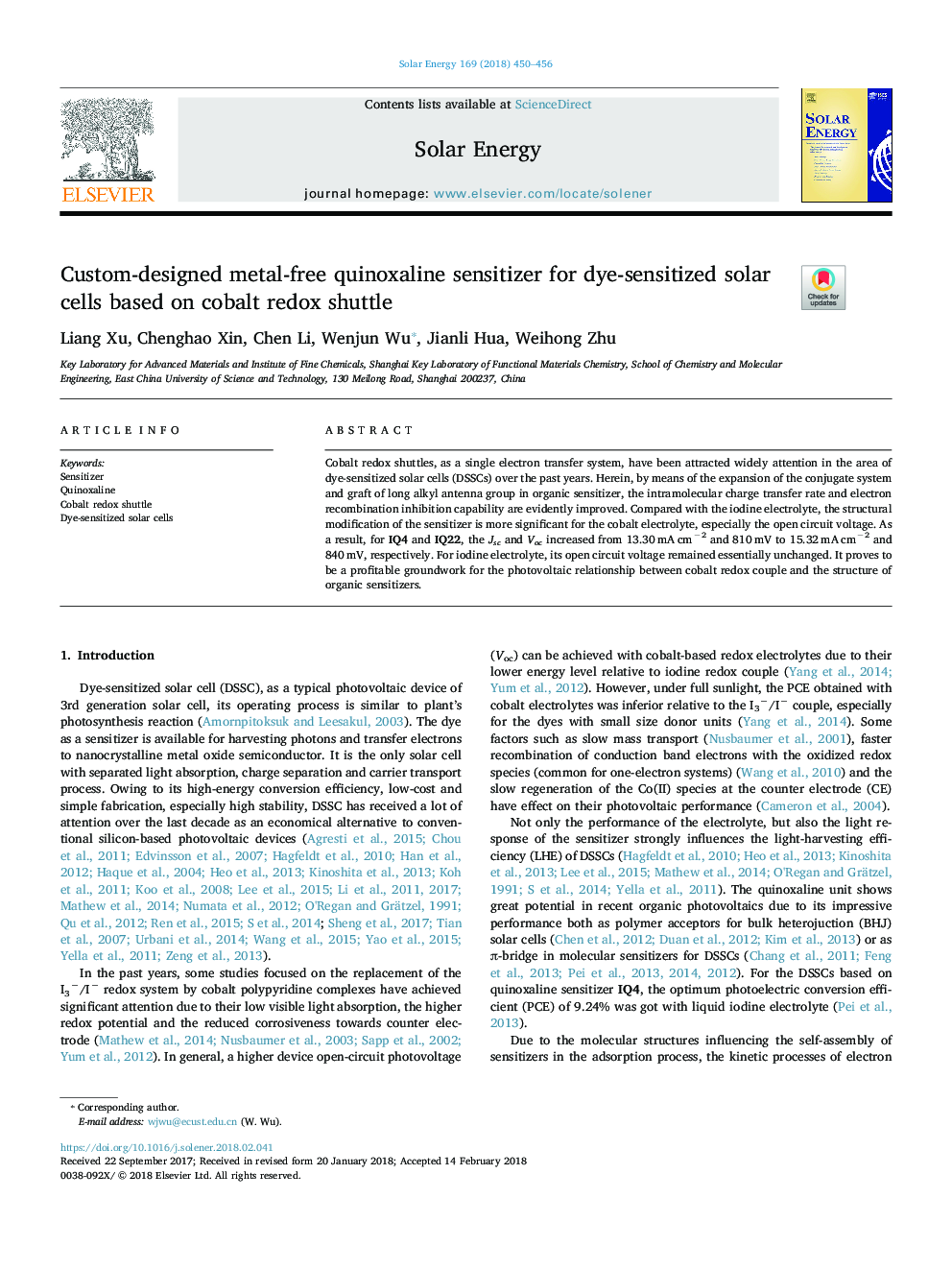| Article ID | Journal | Published Year | Pages | File Type |
|---|---|---|---|---|
| 7935219 | Solar Energy | 2018 | 7 Pages |
Abstract
Cobalt redox shuttles, as a single electron transfer system, have been attracted widely attention in the area of dye-sensitized solar cells (DSSCs) over the past years. Herein, by means of the expansion of the conjugate system and graft of long alkyl antenna group in organic sensitizer, the intramolecular charge transfer rate and electron recombination inhibition capability are evidently improved. Compared with the iodine electrolyte, the structural modification of the sensitizer is more significant for the cobalt electrolyte, especially the open circuit voltage. As a result, for IQ4 and IQ22, the Jsc and Voc increased from 13.30â¯mAâ¯cmâ2 and 810â¯mV to 15.32â¯mAâ¯cmâ2 and 840â¯mV, respectively. For iodine electrolyte, its open circuit voltage remained essentially unchanged. It proves to be a profitable groundwork for the photovoltaic relationship between cobalt redox couple and the structure of organic sensitizers.
Related Topics
Physical Sciences and Engineering
Energy
Renewable Energy, Sustainability and the Environment
Authors
Liang Xu, Chenghao Xin, Chen Li, Wenjun Wu, Jianli Hua, Weihong Zhu,
